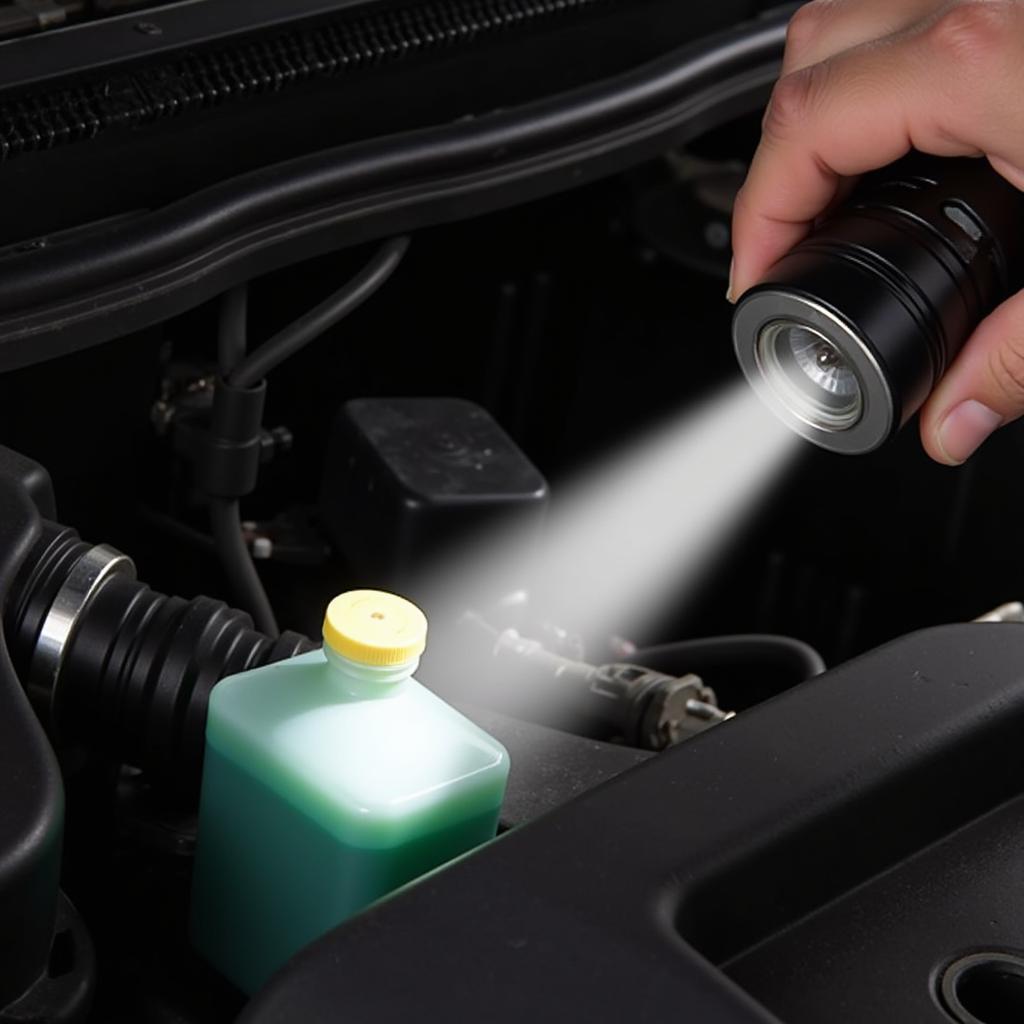A 2006 Silverado with illuminated “P” and “I” brake system warning lights can be a cause for concern. These lights indicate a potential issue with your truck’s braking system, requiring immediate attention to ensure your safety and the safety of others on the road. This guide will delve into the potential causes, troubleshooting steps, and solutions for addressing those pesky warning lights on your 2006 Silverado.
 2006 Silverado dashboard with P and I brake warning lights illuminated
2006 Silverado dashboard with P and I brake warning lights illuminated
Understanding the Warning Lights
Before we dive into the specifics, it’s crucial to understand what each warning light represents:
-
“P” Light: This indicates an issue with your parking brake. It could be as simple as the parking brake not being fully disengaged or a more complex problem with the parking brake cable or sensor.
-
“I” Light: This light signals a problem within your main braking system. This could be due to low brake fluid, a malfunctioning brake light switch, or issues with the ABS (Anti-lock Braking System).
Common Causes and Troubleshooting Tips
Let’s explore some common culprits behind these warning lights and how to troubleshoot them:
1. Parking Brake Issues
- Check the parking brake lever: Ensure the parking brake lever is fully released. Sometimes, a slight engagement can trigger the warning light.
- Inspect the parking brake cable: Over time, the parking brake cable can become stretched, corroded, or damaged, preventing the parking brake from fully disengaging.
2. Low Brake Fluid
-
Check the brake fluid reservoir: One of the most common reasons for the “I” light is low brake fluid. Locate the reservoir under the hood and check the fluid level. If it’s low, adding brake fluid might temporarily solve the issue, but it’s essential to determine the cause of the leak and have it repaired by a qualified mechanic.
 Mechanic checking brake fluid level in a 2006 Silverado
Mechanic checking brake fluid level in a 2006 Silverado
3. Brake Light Switch Malfunction
- Test the brake lights: A faulty brake light switch can also trigger the “I” light. Have someone press the brake pedal while you check if the brake lights are working. If not, the switch might need replacement.
4. ABS Problems
-
Check for ABS codes: If the ABS system detects a fault, it can trigger both warning lights. Using an OBD-II scanner, you can read the ABS codes to pinpoint the specific issue.
“It’s important to remember that addressing ABS issues often requires specialized tools and knowledge. If you’re not comfortable working with automotive electronics, it’s best to leave it to the professionals.” – John Miller, ASE Certified Master Technician
Remote Diagnostics and Software Solutions
In today’s technologically advanced world, remote diagnostics and software solutions play a crucial role in identifying and resolving automotive issues, including those related to brake systems.
- Remote Diagnostics: Imagine a scenario where you’re experiencing brake system warnings, but you’re miles away from a trusted mechanic. Remote diagnostics allow qualified technicians to access your vehicle’s computer system remotely, read error codes, and analyze data in real-time. This enables faster diagnosis and potentially eliminates unnecessary trips to the repair shop.
- Software Updates and Programming: Modern vehicles heavily rely on software to control various systems, including brakes. Software updates from the manufacturer often contain bug fixes and performance improvements that can address known issues with the braking system. Remote software updates allow you to receive these updates conveniently, ensuring your vehicle’s software is up-to-date without leaving your driveway.
When to Seek Professional Help
While some issues can be resolved with basic troubleshooting, it’s crucial to know when to seek professional help. If the warning lights persist after trying the above steps, or if you’re uncomfortable working on your vehicle’s braking system, it’s best to consult a qualified mechanic specializing in 2006 Silverados. They have the expertise, tools, and experience to diagnose and repair complex brake system problems effectively.
Conclusion
Addressing “P” and “I” brake system warning lights on your 2006 Silverado is paramount for your safety and the proper functioning of your vehicle. By understanding the potential causes, utilizing troubleshooting techniques, and knowing when to seek professional help, you can ensure a smoother and safer driving experience. Remember, a well-maintained braking system is not just about stopping power; it’s about having peace of mind every time you hit the road.

